A Journey Where Time Has Stopped (apparently)
In a small and marginal country, ie on the edge of the EU, there are relatively few objectives to impress from an architectural point of view. Few at first sight but many if you do a deeper search and try not to make comparisons with Italy, France, Spain, Germany, Portugal, and many other countries with old and grandiose histories.
Because in a small country the constructions and monuments are small, also although there are exceptions, the most notable is in my own country and of course, I will have to present this situation as well. My little country is called Romania and I think some of you know what exception I mean.
But now, again about church architecture, this being the most notable form of architecture in the Romanian Middle Ages. Romania is an Orthodox Christian country, with Greek and Russian influences, I mean the religious influences of the past.
The Romanian countries of the past, before the formation of the unitary state, were Moldova and Wallachia (Romanian Country). They were led by rulers who found in the church an important ally in the rule of the country, because the inhabitants, lacking the most basic knowledge, were very religious. They were God-fearing and this was exploited to the full by the leaders and the church. In order for this faith to be preserved and perpetuated, they needed something to impress and gather the people, and of course, that was the churches and the monasteries. Imagine the way people lived in small houses, some buried in the ground, the big churches and monasteries. Impressive buildings in size and decorations. This explains, in my opinion, the multitude of churches built in that period. Besides, the rulers were also religious and built churches to be forgiven of sins ... and they had a lot! Moreover, everyone wanted to build the largest and most beautiful church, surpassing the buildings in neighboring countries.
A few days ago I went to get vaccinated against covid-19 in a locality near Bucharest because there was a big crowd in the city at the vaccination centers. Near that locality, there is an old monastery, built in a very picturesque place, bordered on one side by the forest and on the other by a large lake.
Caldarusani Monastery
Some historical landmarks:
This monastery was founded in 1638 by Matei Basarab (1632-1654), an important leader of Wallachia.
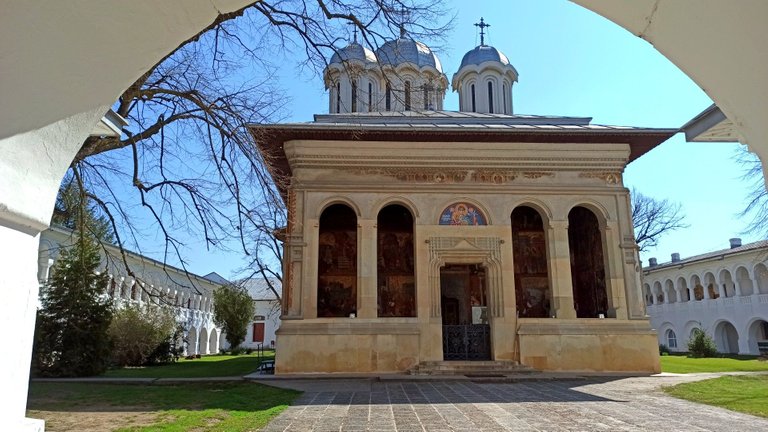
The monastery was a real fortress, surrounded on three sides by a lake, Lake Caldarusani. The large church of the monastery is built in trefoil plan, with three towers.
This architectural style is common to many churches in Romania.
This monastery had great importance for the Romanian culture, here operated a printing house starting in 1834 and an important painting school, founded in 1778. These are some historical data to understand why and how this monastery appeared.
I would like to show you an overview but I do not have such a thing. I found a very short film, just a minute, made by someone who I think was just as interested in testing the drone. The author's name is Andrei Dacian and I found his film on Youtube.
Source
Next, I want to show you what I saw a few days ago, that is, after 383 years from the completion of the construction of this monastery.
Walk through a seemingly deserted monastery
I can say that I am a follower of my wife, in the sense that I am always behind her, with the camera, trying to capture as many images as possible. We arrived at the monastery and went in to see what we could visit, it is Tuesday and it is not a day of church service.
All monasteries built in the fourteenth and sixteenth centuries have something in common. A fortress configuration, more or less fortified. The most impressive are those in northern Moldova, which had to face the attacks of the Tartars, here in the south the fortress does not seem so strong. The walls are actually buildings.
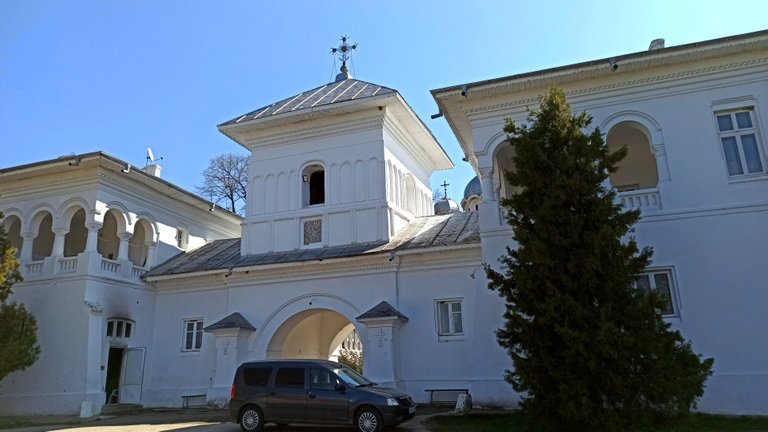
God (I'm still at a monastery), how many cars there are in this country! Wherever I go, I can't help but hit them. This spoils my photo with the entrance to the monastery. I later saw a monk use it.
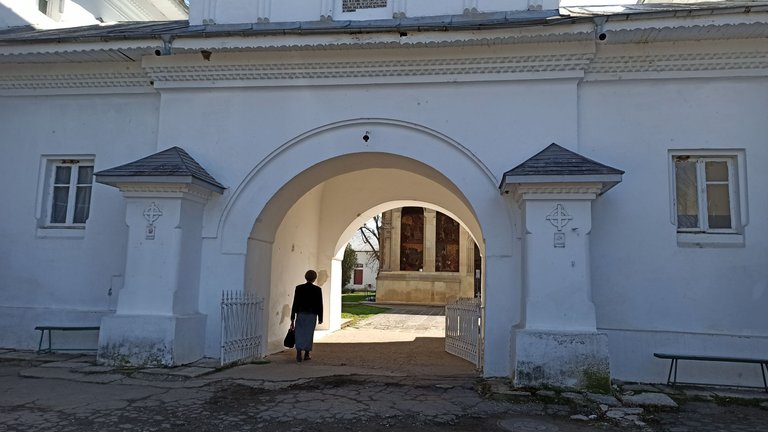
Now I see that the great gates are missing, or it has not been threatened by any invasion, or they have been dismantled in the modern era without wars. Arriving in the inner courtyard I saw the true beauty of this construction.

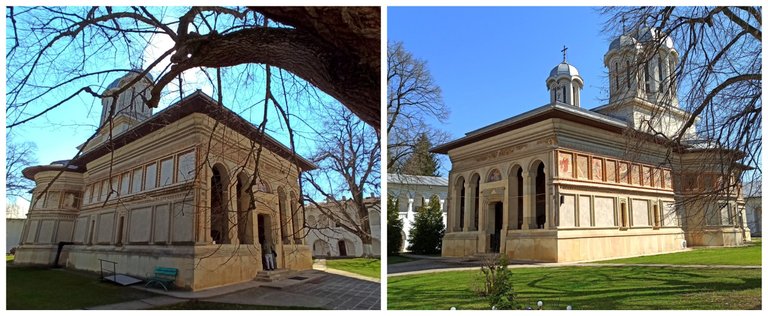
In the middle, the beautiful church. The walls of the monastery are not really walls, they are buildings. The monks' cells! I think there are more than a hundred and yet no movement, it seems an abandoned place. Due to the height of the buildings, I can't take photos that cover the whole complex. I can only show fragments but I hope you can reconstruct the whole.

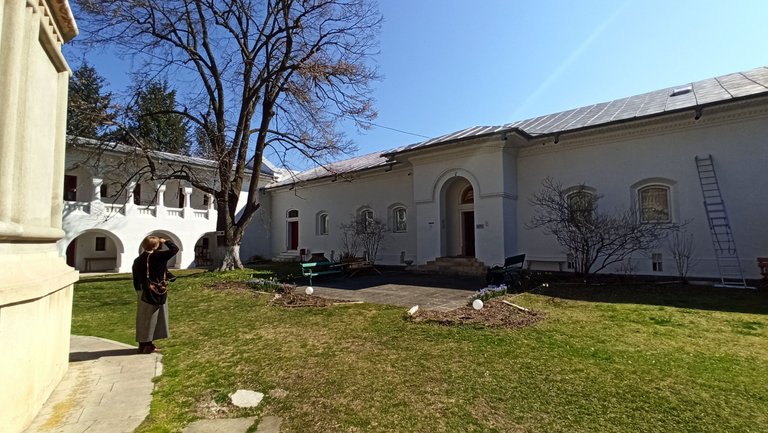

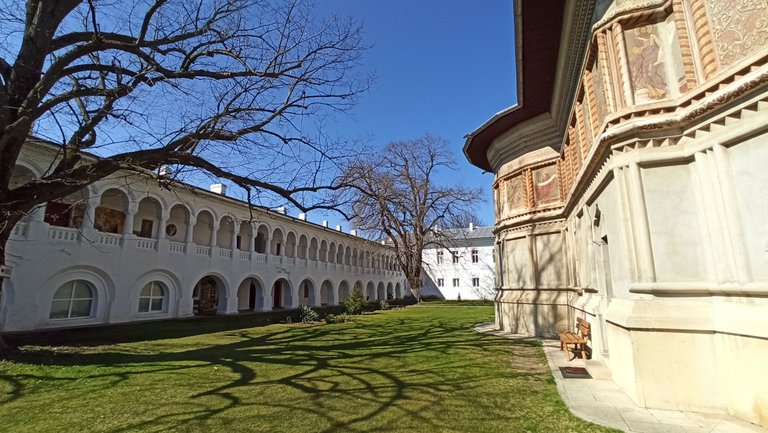
This was a detour around the church. I was impressed by the beauty of the cells, the intense white of the walls that reminded me of the houses in Greece, the floor with the veranda full of columns. I don't know what a cell looks like inside but I like it from the outside.

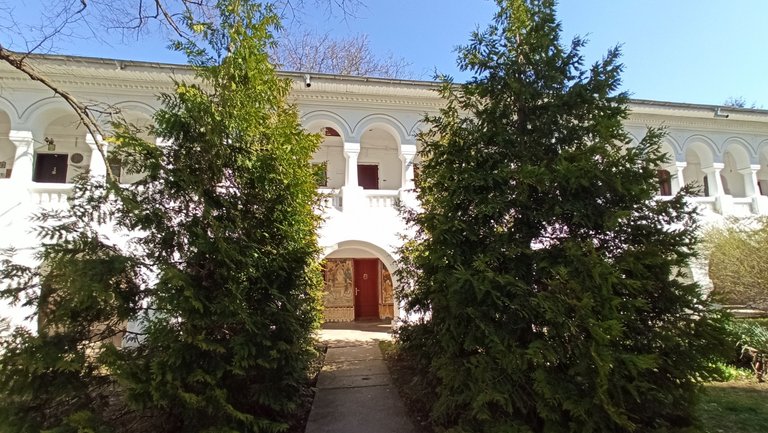
On the walls of the cells I see some paintings. I believe that all the walls were painted with biblical images but the paintings have deteriorated over time, only a few remain. We have the opportunity to imagine what these cells looked like hundreds of years ago.

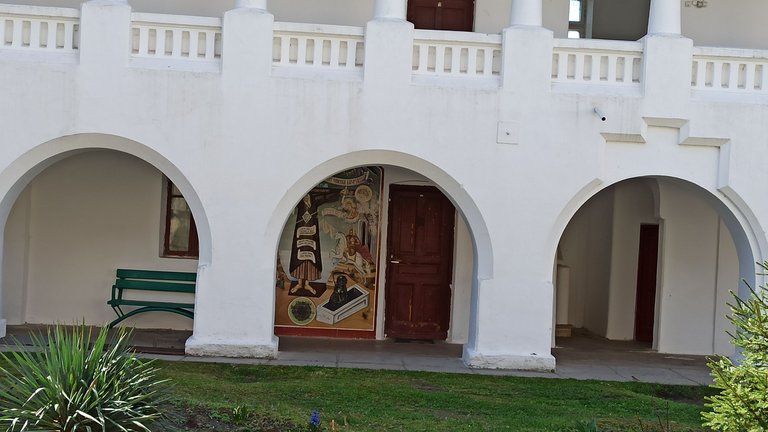
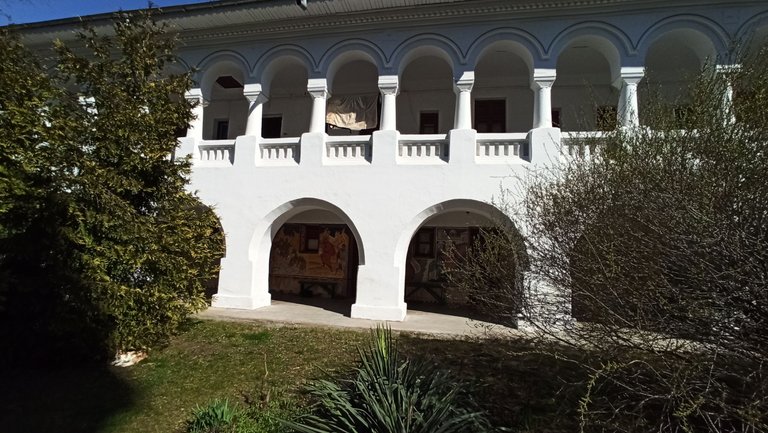
Behind the church, there is also a museum that has valuable exhibits, icons and very old books, the throne of Prince Matei Basarab, and church fabrics and clothes. Unfortunately, I could not enter to visit because there was no one around to open it.
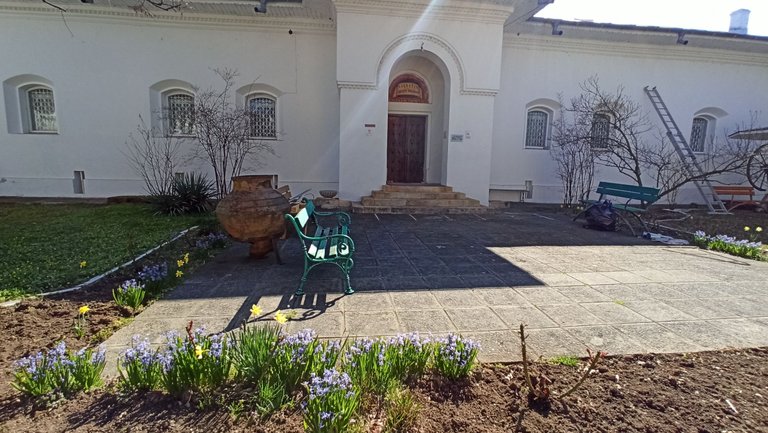
From behind the courtyard looking towards the entrance to the monastery.
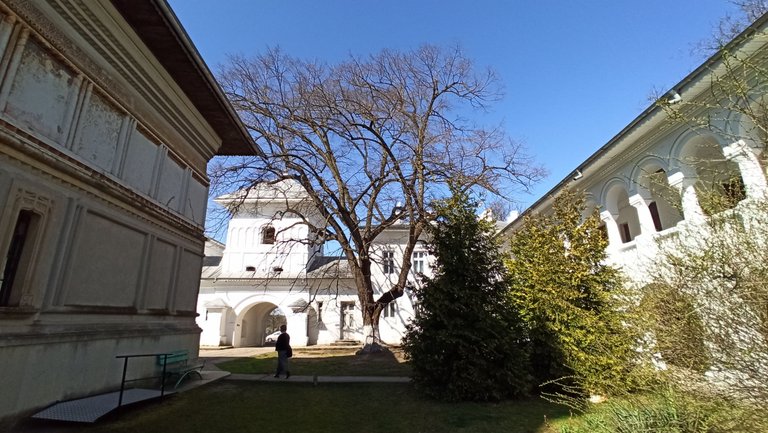
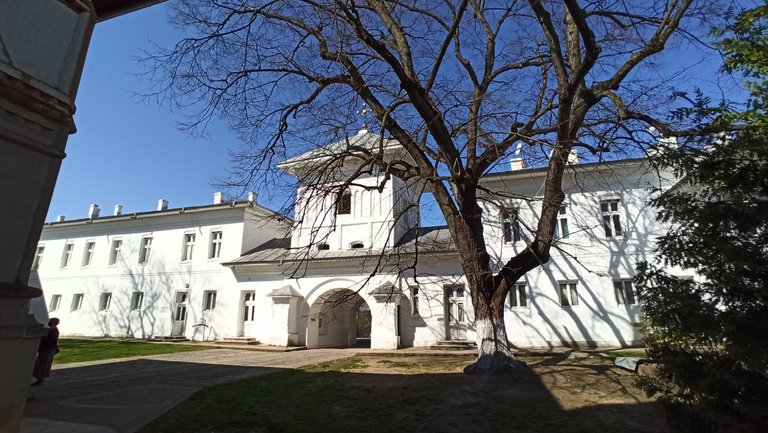
After this detour to the church, I reached the entrance again.

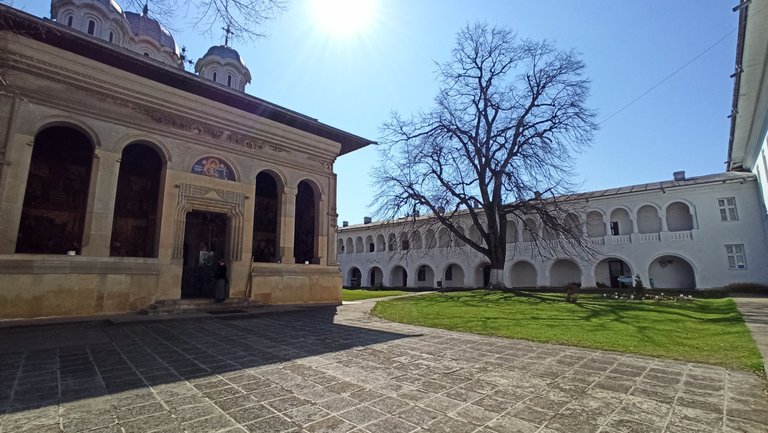
The outer exploration is over. Follow the inside! The following is a kind of novelty for me because I was able to photograph without any impediment. Usually not much can photograph in churches, priests and monks are especially reluctant about it.
I have always photographed secretly and this has unfortunately led to very poor quality of the photos. This time I photographed at will but it was another problem. Insufficient light. The penumbra in the church was perfect for the secret atmosphere but not too good for photography. Now let's go in ...
Inside the church
All churches have a kind of porch at the entrance, usually with painted walls. The fact that these walls were protected from rainwater made the painting remain in fairly good condition.
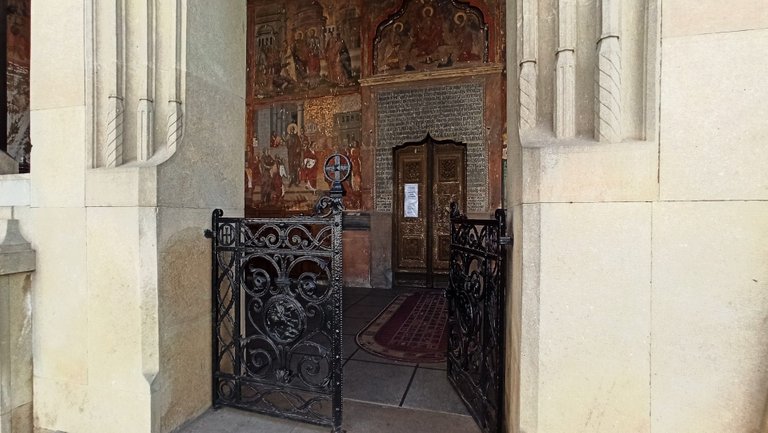
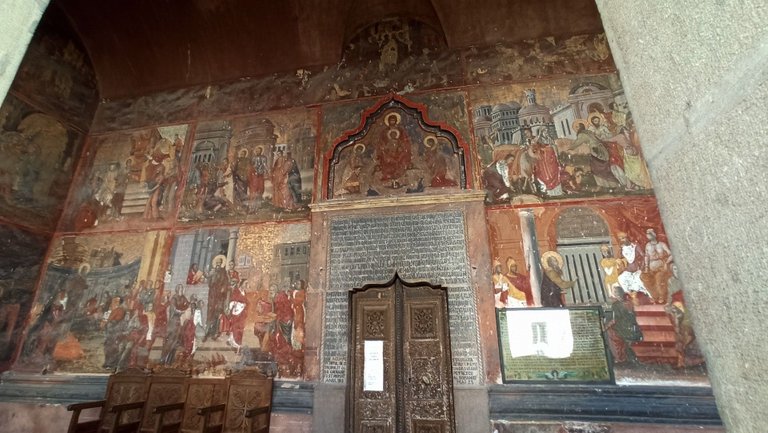
Here are the tombs of important church leaders and abbots of this monastery.
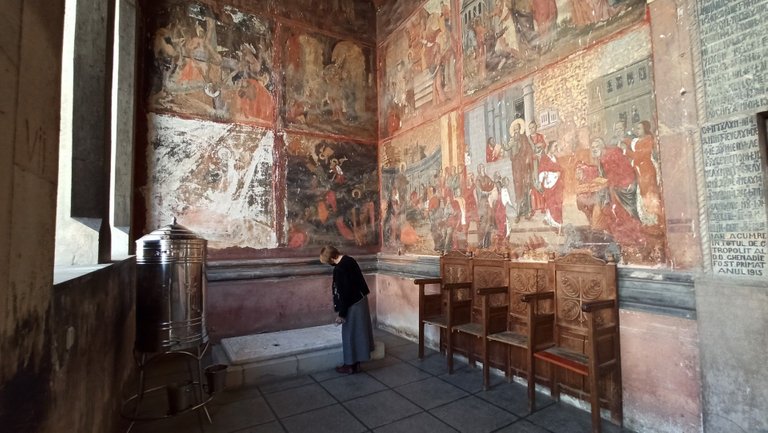

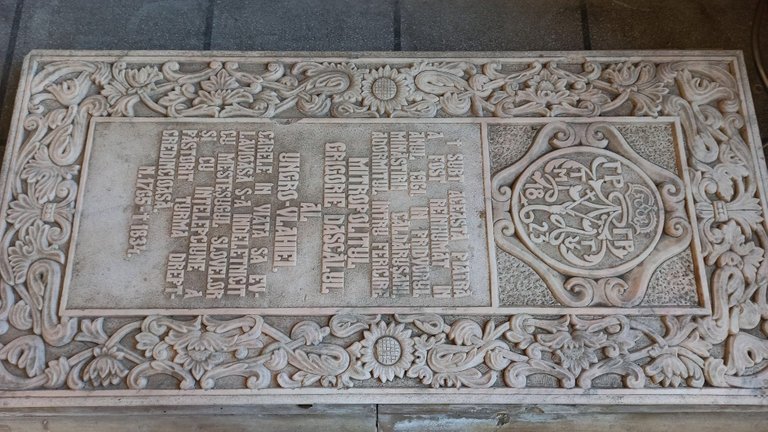
The pandemic made us find hand sanitizers here too, although the church was quite reluctant to acknowledge the severity of this pandemic. Of interest, of course, because they could not keep many of the church services that brought a lot of people and more money.
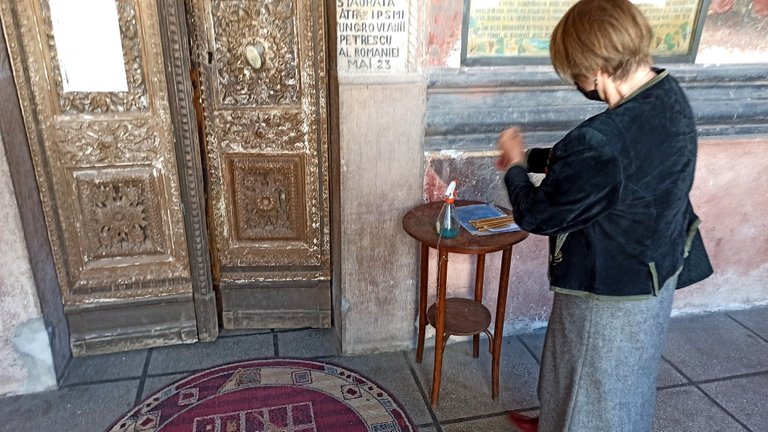
Now we step inside. I must admit that it is a strange feeling once I enter, especially since the church is empty, in fact almost empty because a young man was saying some prayers.
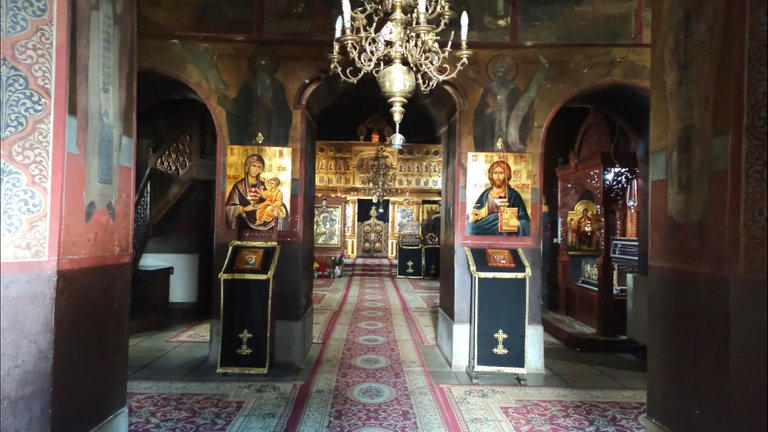
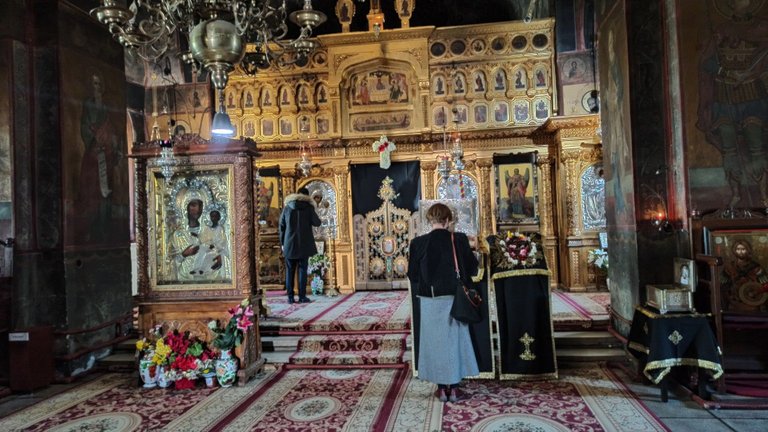
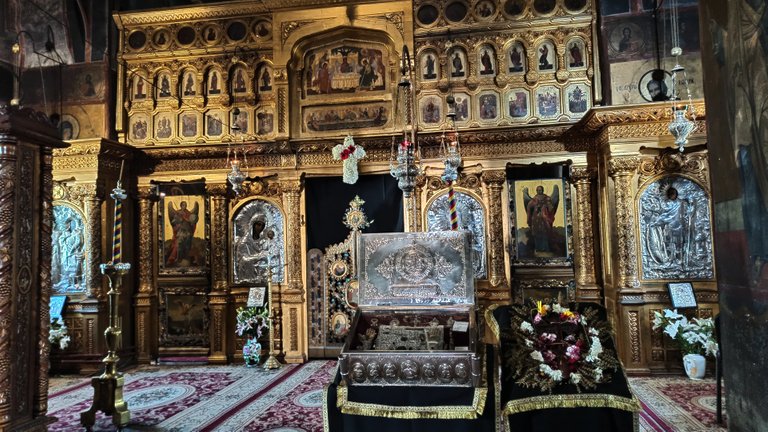
All the interior walls are painted with biblical scenes, of course, and with aspects of the lives of the various saints.

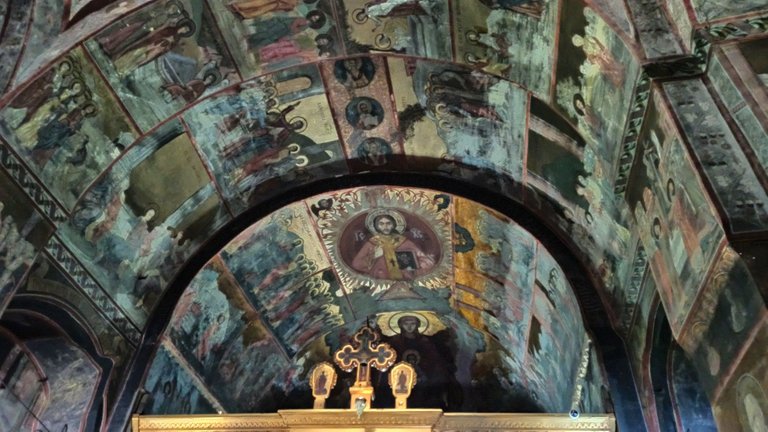
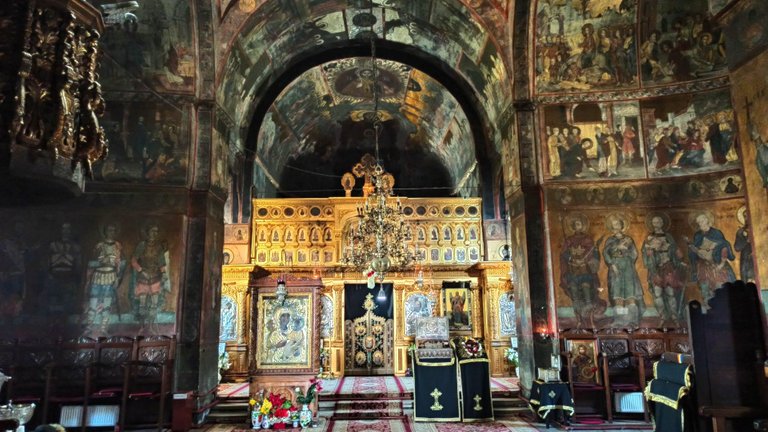
The light penetrates only through the narrow windows in the walls and in the church tower...
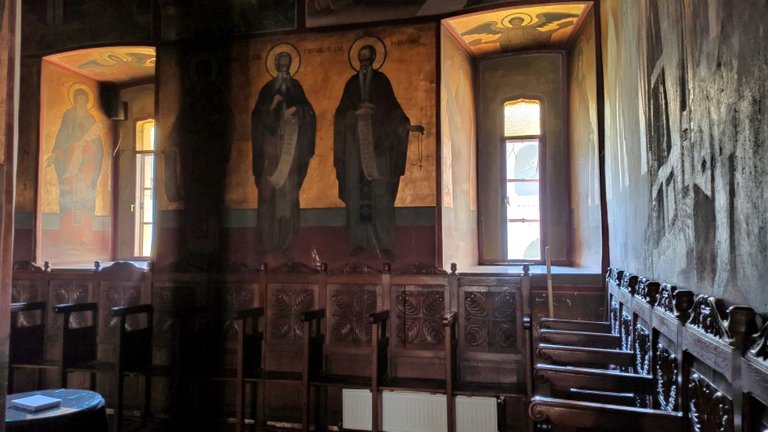


...and through the door we left open.

My wife, who is a practicing Christian, uses every visit to a church to pray. For everyone and everything. There is always something to pray for.
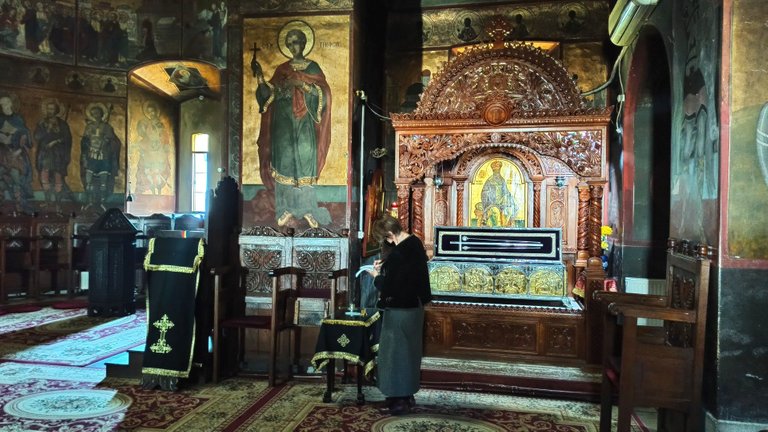

As I said, it was a very pleasant surprise to be alone in the church. I could quietly admire the painting and the way the construction was done. Almost four hundred years ago they managed to build something like that. Not that it is something special, since ancient times surprising buildings have been built but in this part of the world this has not happened. Hence notions of architecture and resistance to some masons who usually built only very small houses. I believe that the ruler brought at least the architect from elsewhere, where the tradition for such constructions was old.
Because I mentioned the ruler, he and his family are painted on the church wall. This is a tradition and an obligation.
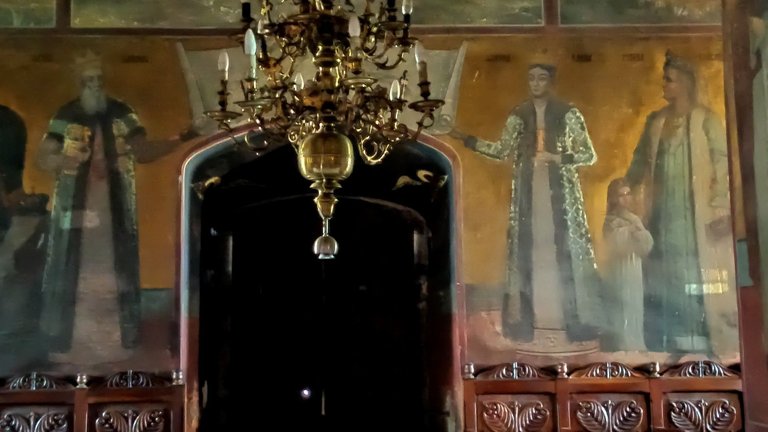
I said goodbye to the ruler and the church and the monastery. I spent a few hours away from the hustle and bustle of the city.



https://twitter.com/danfree2011/status/1380273485549875202
Nice monastery, beautiful post
Thank you!
It is so simple outside, but inside is so majestic, wow!
Thank you!
You're welcome.
Hello @bluemoon
Wow, that's a great post. Stunning photos and very well described, you have a flair for being able to go describing, even, you talked about history and the way you discussed it sure could entertain anyone.
Thanks for sharing that journey.
Sorry for the delay in answering.
Thank you so much for feedback! This is the best reward when I see someone reading my post and even more than that.
The interior is a complete contrast from the stark white exterior walls! It's a beautiful monastery. Great that it was deserted, you were able to take beautiful photographs.
Love that, it is true that photographers are always behind.
Thank you! I like the white exterior, it is not characteristic for such constructions.
Yes, I'm always behind my wife, but she doesn't like that.
Sorry for the delayed response.
Wow! What a construction from the past!! It would take me at least five days to walk and see this place. How could these people build such a castle fortification with so much details and designs! They were genius of those era.
Unfortunately we live at such enormous distances that it will not be possible to visit the places we see in our posts. It remains to enjoy what we see here. Thank you!
You have the trick of picking very rare places to visit!! It’s well worth your traveling effort! I could imagine how awe-struck I would be to suddenly be in contact with such powerful work and vibes of past glory!
Thank you very much for your observation. It all starts with the desire to take pictures.
The Caldarusani Monastery is definitely an old religious building but, on the outside, I find the design quite modern and belongs to a more recent era, maybe because of the white paint and the light-colored textures and surfaces. On the other hand, its authentic antiquity can be witnessed in the interiors because of its stark contrast from the exterior. The interior's dark ambiance and color theme with carvings, paintings, artifacts, and furniture all add up to an ancient period that got frozen in time. What a marvelous Romanian architectural experience! Thank you @bluemoon for the comprehensive tour!
Thank you! You made a correct observation, viewed from the outside and ignoring the church, the building seems much more recent, it could be built even now and be functional. Probably many of the interior walls were painted but were lost due to bad weather and periods when the times were difficult for the monks and failed to maintain the building in good condition. Painting white was the cheapest and easiest solution.
I apologize for the answer so late!
What a beautiful and calming place to be in and those arches, the open spaces, the intricate structural details, all are very amazing.
Thank you! Calm must be present in a monastery, but more calm is induced by architecture, as you noticed, because otherwise there is agitation, both in the activity of monks or when there are religious services and many participants.
Hello @bluemoon, just dropping by to congratulate you. Continue to inspire us with your beautiful photographs and witty writing.
The Architecture+Design Community is an Active Member of the OCD Communities Incubation Program
Find out more about the community comprehensive guidelines
Thank you! I will try to do this further because it gives me great pleasure.